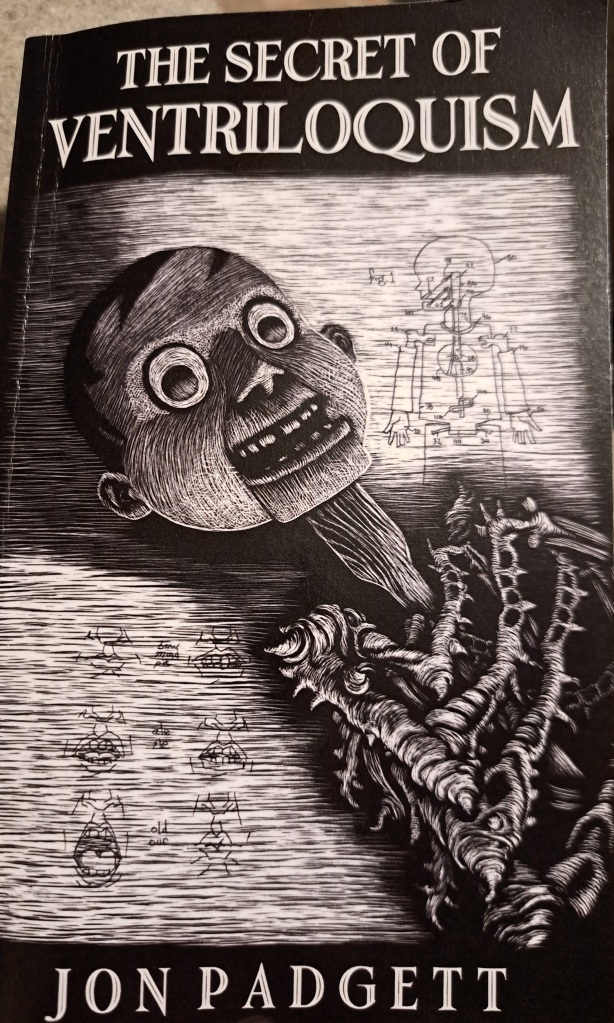Somehow this was my first Adam Nevill read – I’m not sure how I’d not read any of his fiction before, but I loved the deep characterisation, how much you feel for them, and reel from some of the horrific situations they find themselves in.
The beauty of this novel is in many respect its simplicity. There are just six characters and one storyline. A young family – Tom, his wife Fiona and their young daughter Gracey – move from the city into their first house, a fixer-upper in rural England. Led by Tom’s enthusiasm for living an idealised rural life, they are there to do up the house and create a different kind of life for themselves, one without the crime of the city, one where they can enjoy an outdoor life, and Gracey can play freely in the woods next to their new house.
What they don’t know is that all the people who have previously lived in this house have met a tragic end – suicide, murder and madness. And the reason: the neighbours. Medea and Magi are an elderly couple next door who from the off appear to be unreasonably and aggressively intolerant of them, their new neighbours, and have some mysterious power over people in the village.
Tom is almost immediately wound-up by their perfect garden and superior attitude, and the arguments between them begin straight-away. Fiona pleads with Tom to put his energy into the house or finding freelance work, but he is driven by the overriding sense that the neighbours are making their life unnecessarily difficult.
Gradually, over the first 150 page or so, Tom – and us, the readers – discover that in fact he is right to be suspicious: they are practicing dark arts in order to maintain power. With the help of Blackwood, an occultist, and against the preferences of Fiona, Tom comes to see that they have filled their house with curses that affect them in various ways. Gracey ventures into the woodland to see them performing a ritual. Their little dog Archie dies of a mysterious illness. The relationship between Tom and Fiona all but disappears.
And then in a shocking, stomach-churning scene, something terrible happens to Gracey. Rather than reacting as Fiona would once have expected, Tom knows it’s a result of the dark magic these malicious neighbours have been practicing from the start, and Blackwood advises that unless the curse is reversed Gracey will never be better. So at that moment he leaves Fiona at the hospital with Gracey and goes to end things once and for all with his neighbours.
This is such a strong novel: far more than a piece of folk horror genre writing, not that there’d be anything wrong with that if that’s what it were.
First of all, there’s the quality and complexity of the language. Throughout the book Neville has powerful description of both the everyday nature of a decrepit house, and the fantastical scenes, rituals and rites that Tom and Gracey both witness on various occasions. The language really elevates this piece of horror.
Secondly there’s the build-up. I’d read a couple of short reviews on Good Reads that Cunning Folk takes a while to get going, and that the book is split into two halves, with the first focussed on the house and family, the second moving into horror.
Actually there’s A LOT going on in the first half – drawing the characters, building our empathy with them, ratcheting up the tension between the neighbours, sowing discord between Tom and Fiona, despatching the dog, creating the mystery. Not only would the second half have been far less effective without all the work done in the first but in fact I’d say the first half is the most engaging part of the novel.
And finally Cunning Folk can be read as a commentary on masculinity and fatherhood. It’s Tom who persuades his wife to make the move to the countryside, who is committed to creating an idyllic family life for Fiona and Gracey. And it’s Tom who sees all the problems with the neighbours and feels he needs to protect his family. In other words, Tom feels responsible for everything that befalls his family, and is so driven to understand it, and bring it to an end, that it drives him half mad and rips their marriage apart.
Of course, in the novel, much of what happens is in fact not his fault at all; it’s the result of maniacal neighbours. But the point remains: he feels the responsibility to create a better life for his family, and to protect them, and in the end he and they pay a very high cost indeed.




